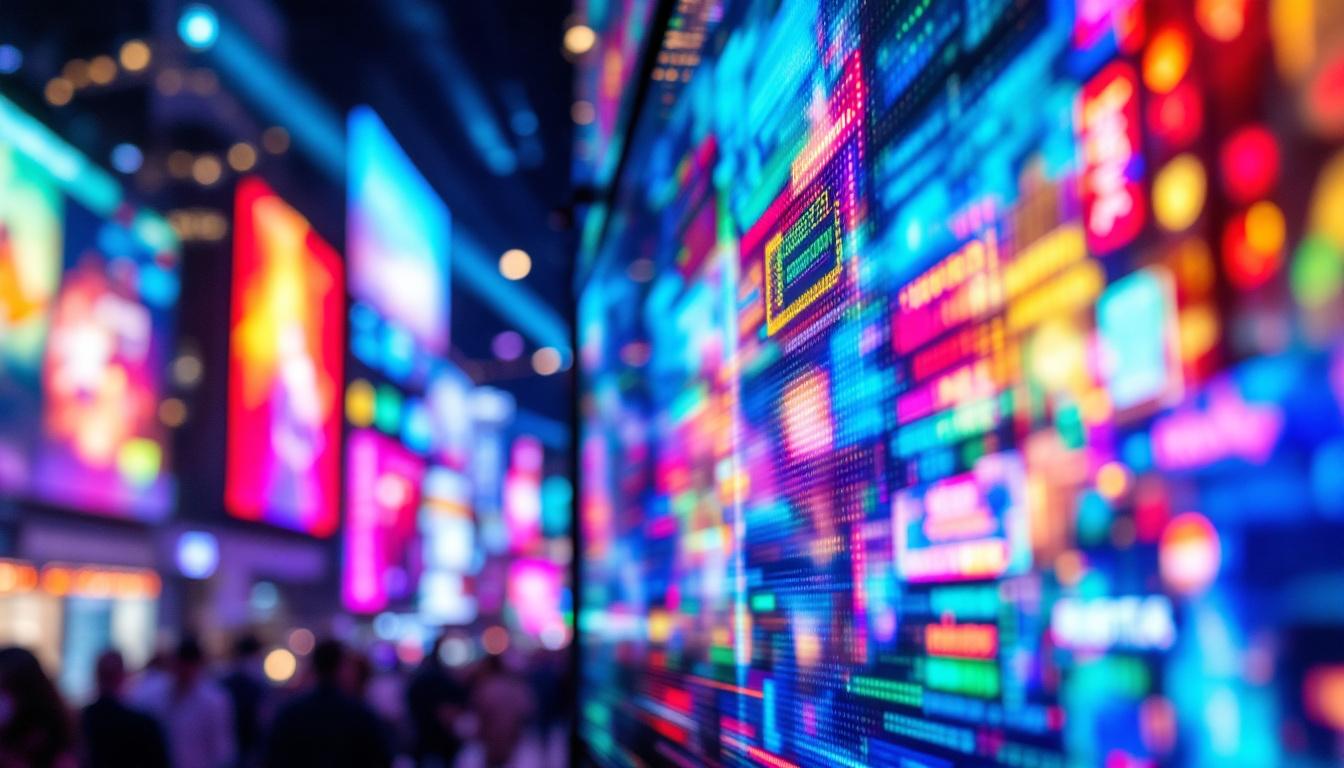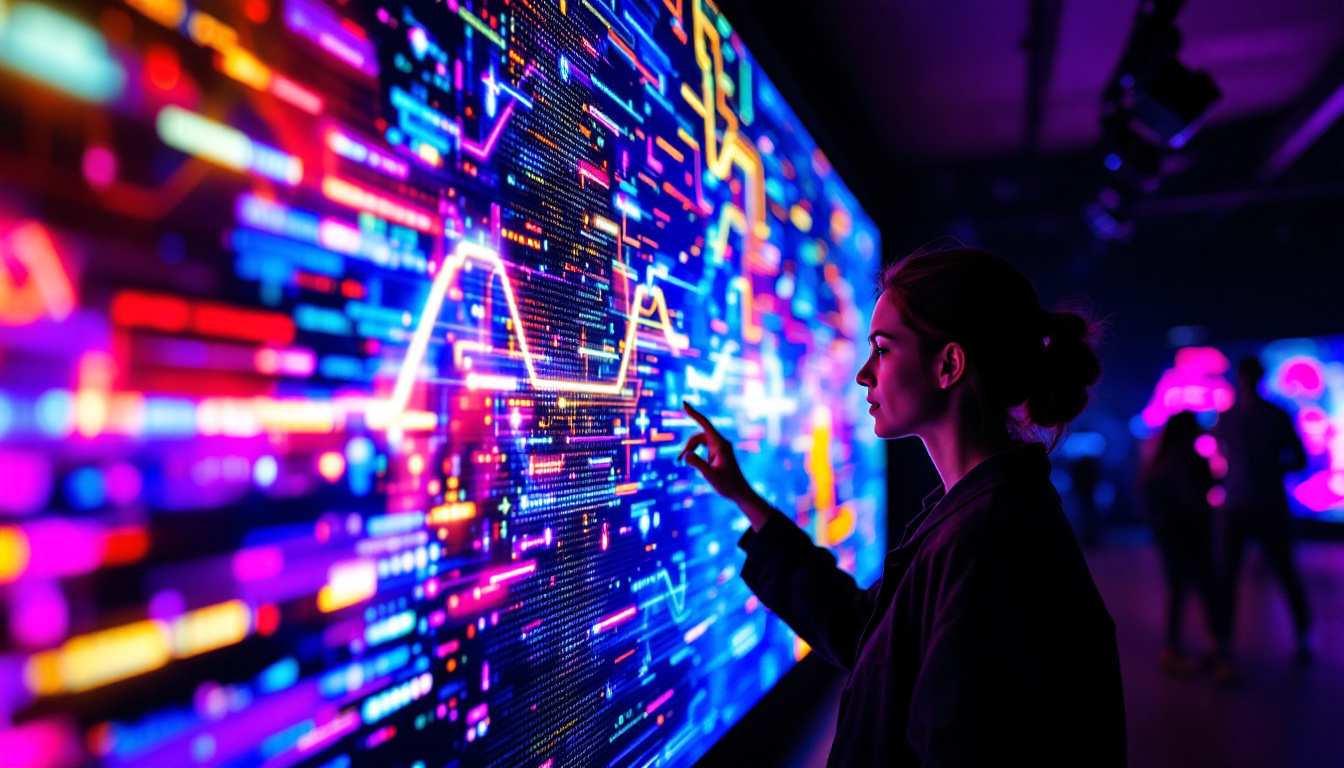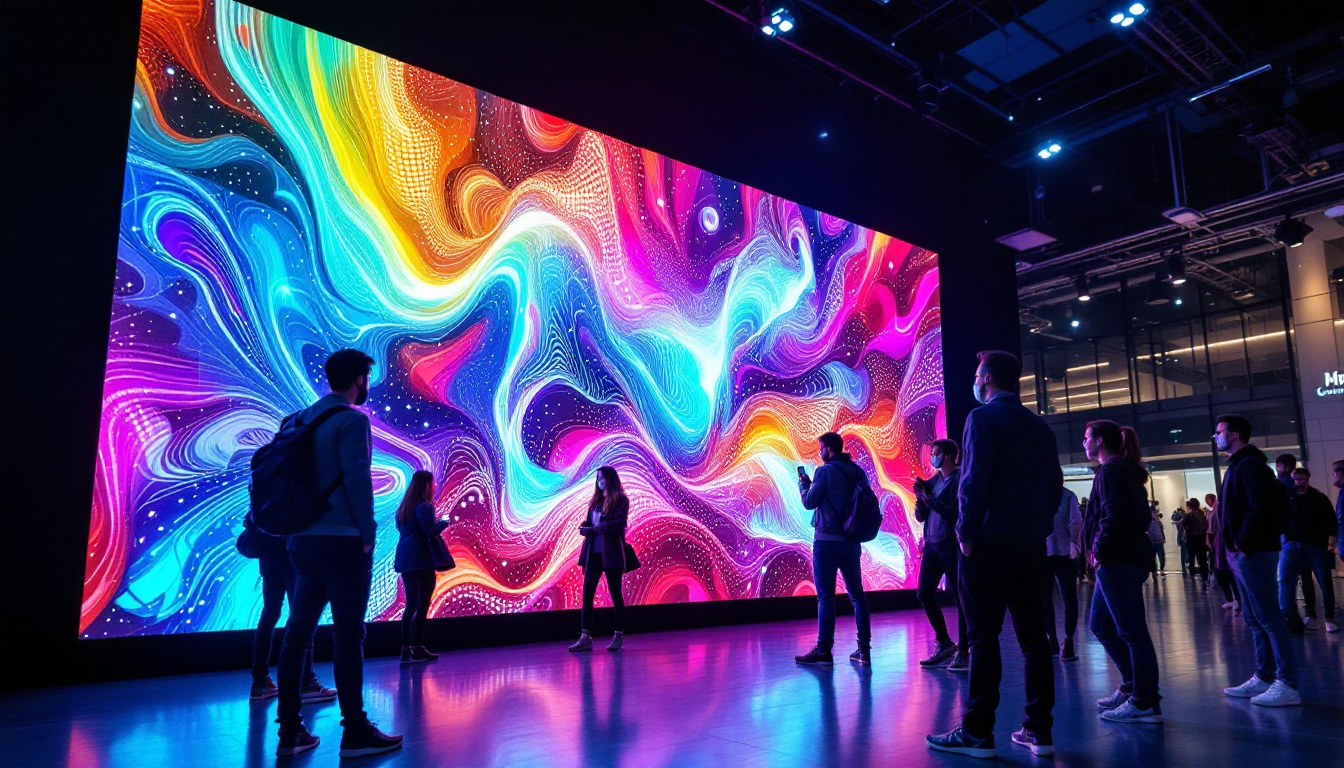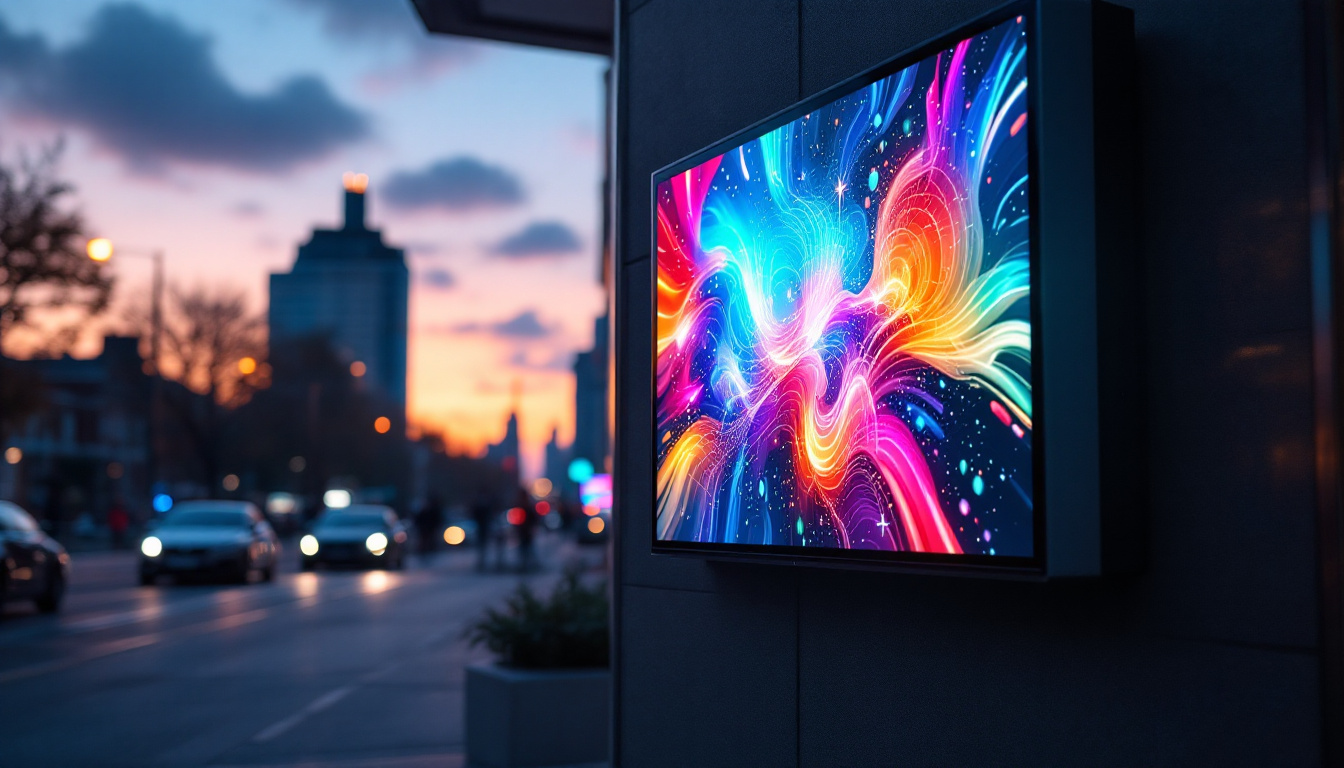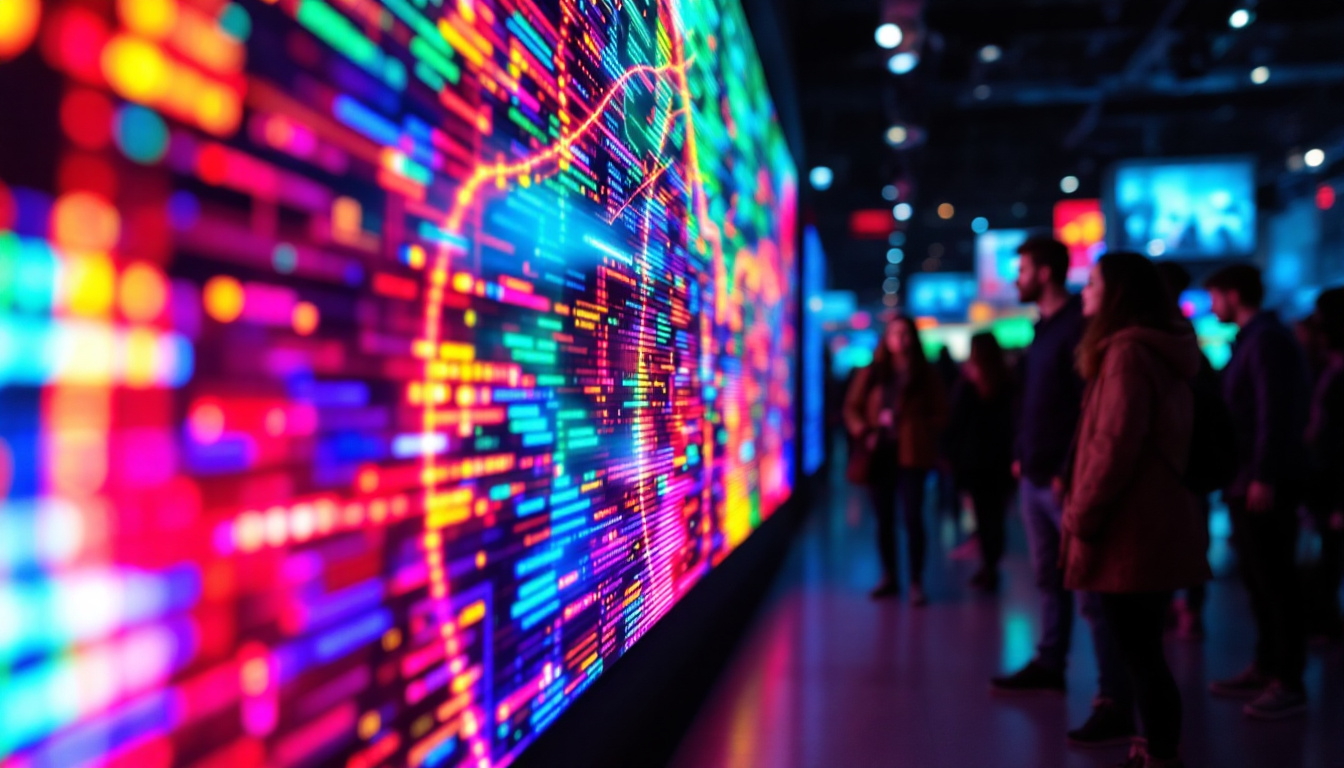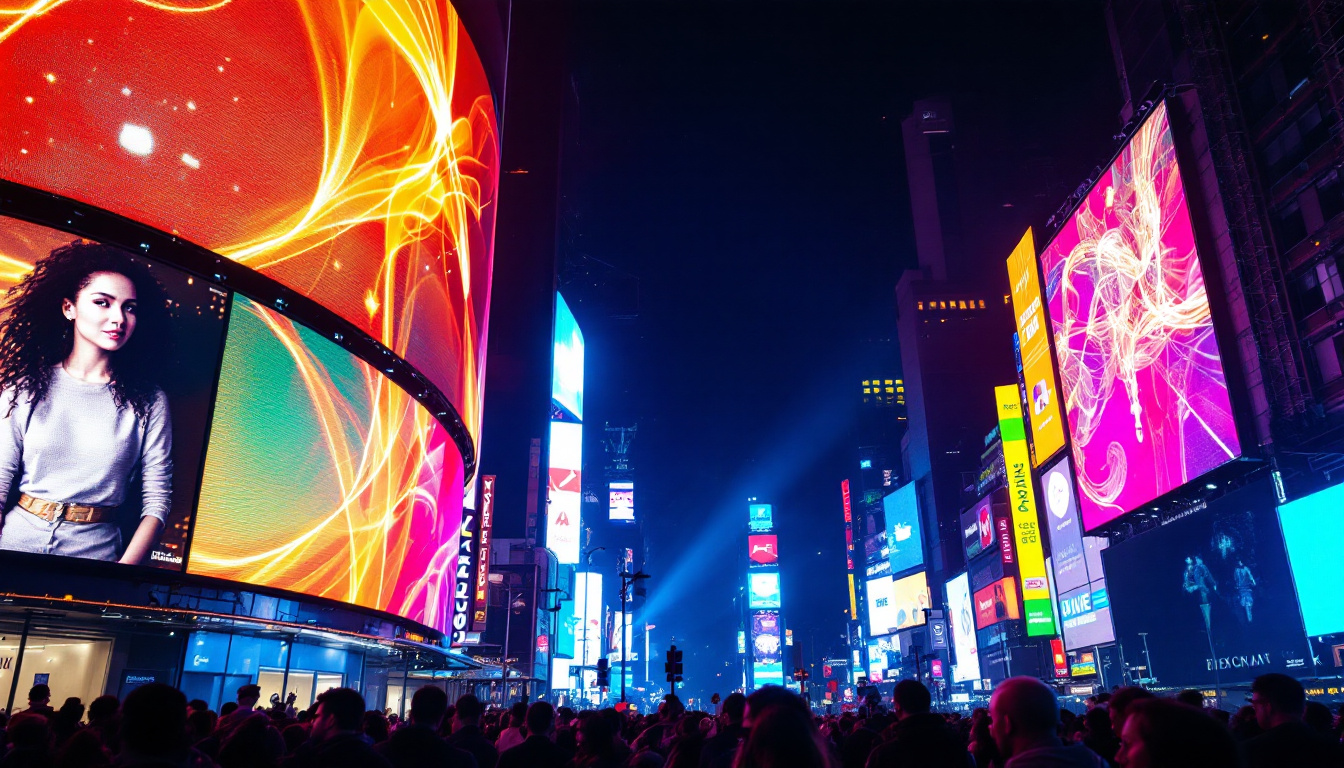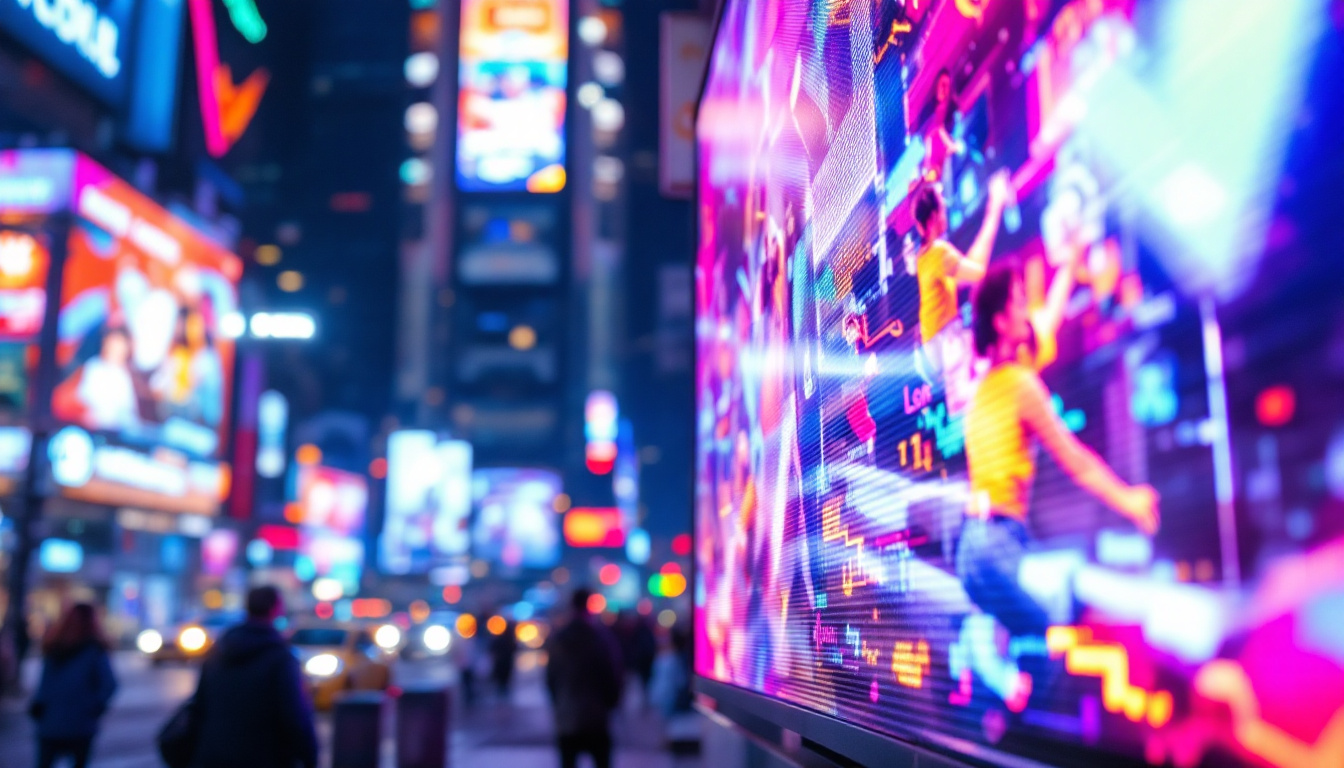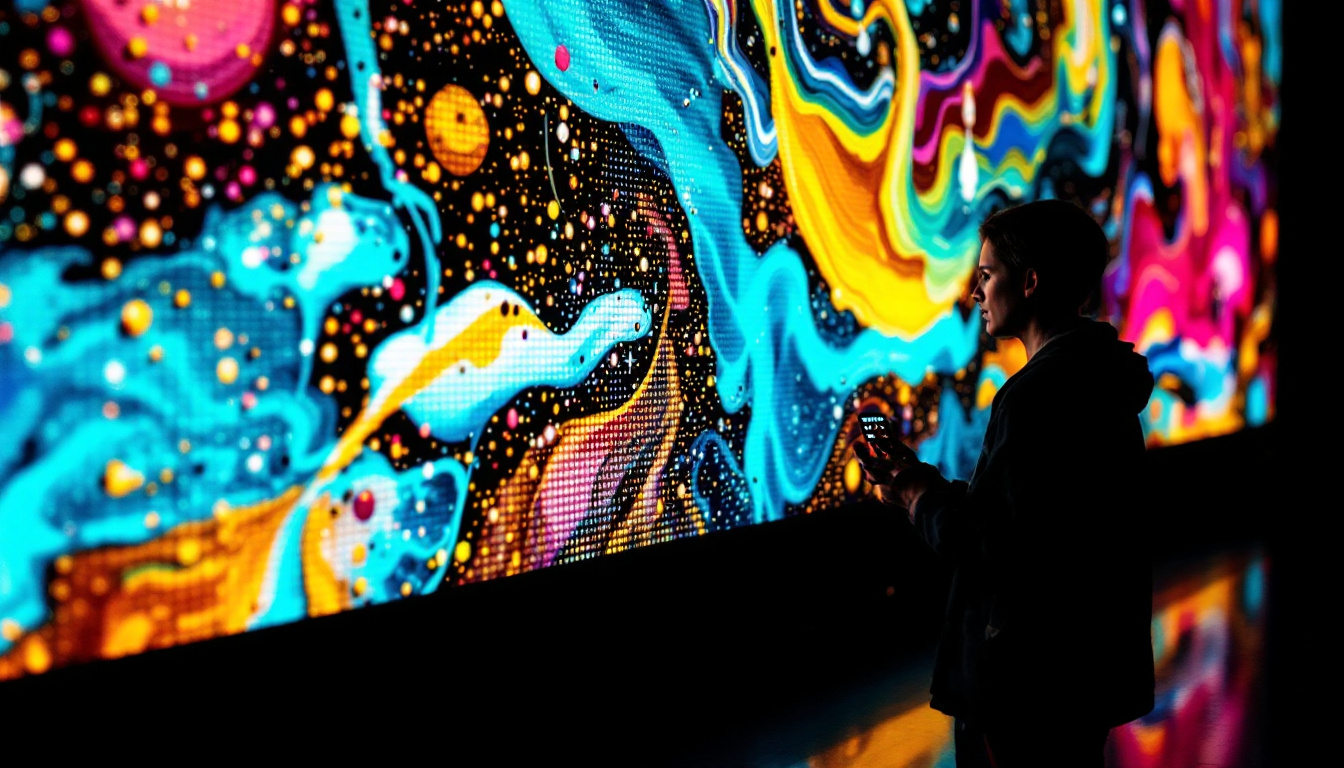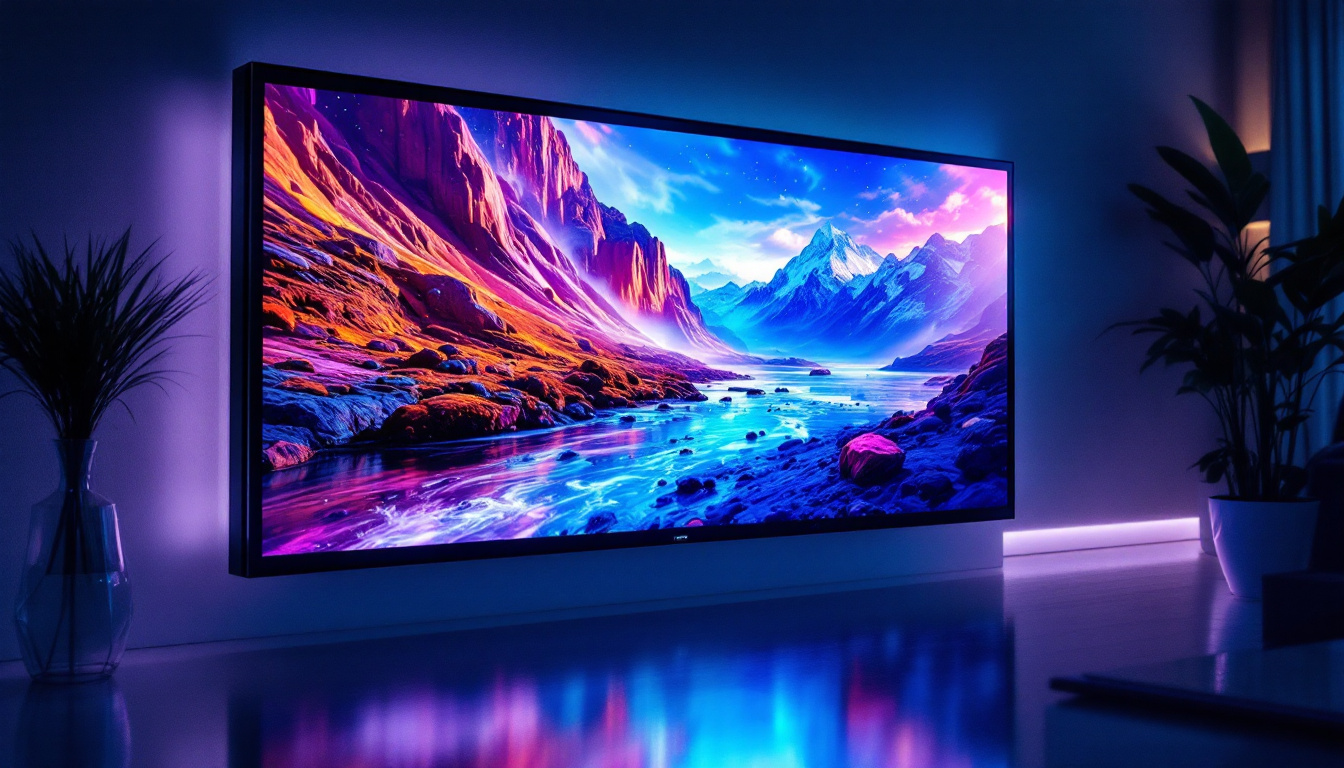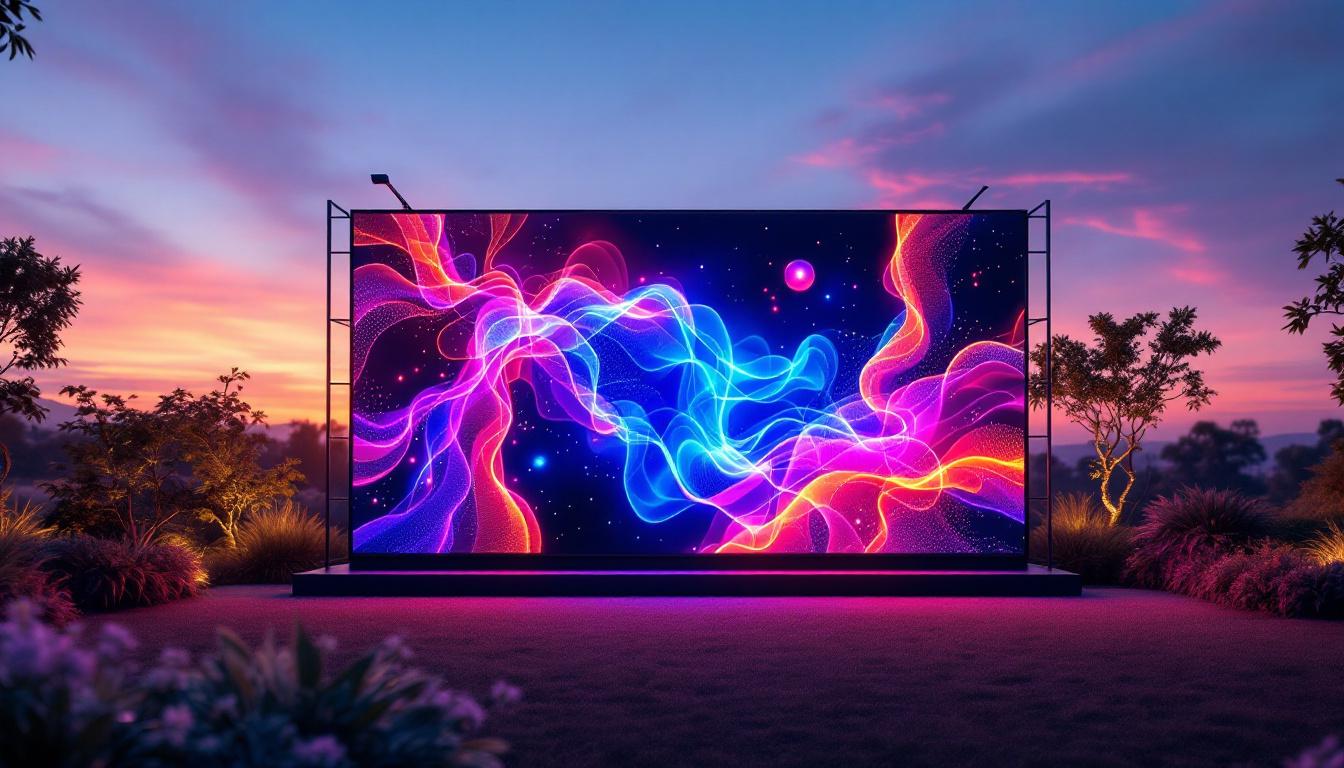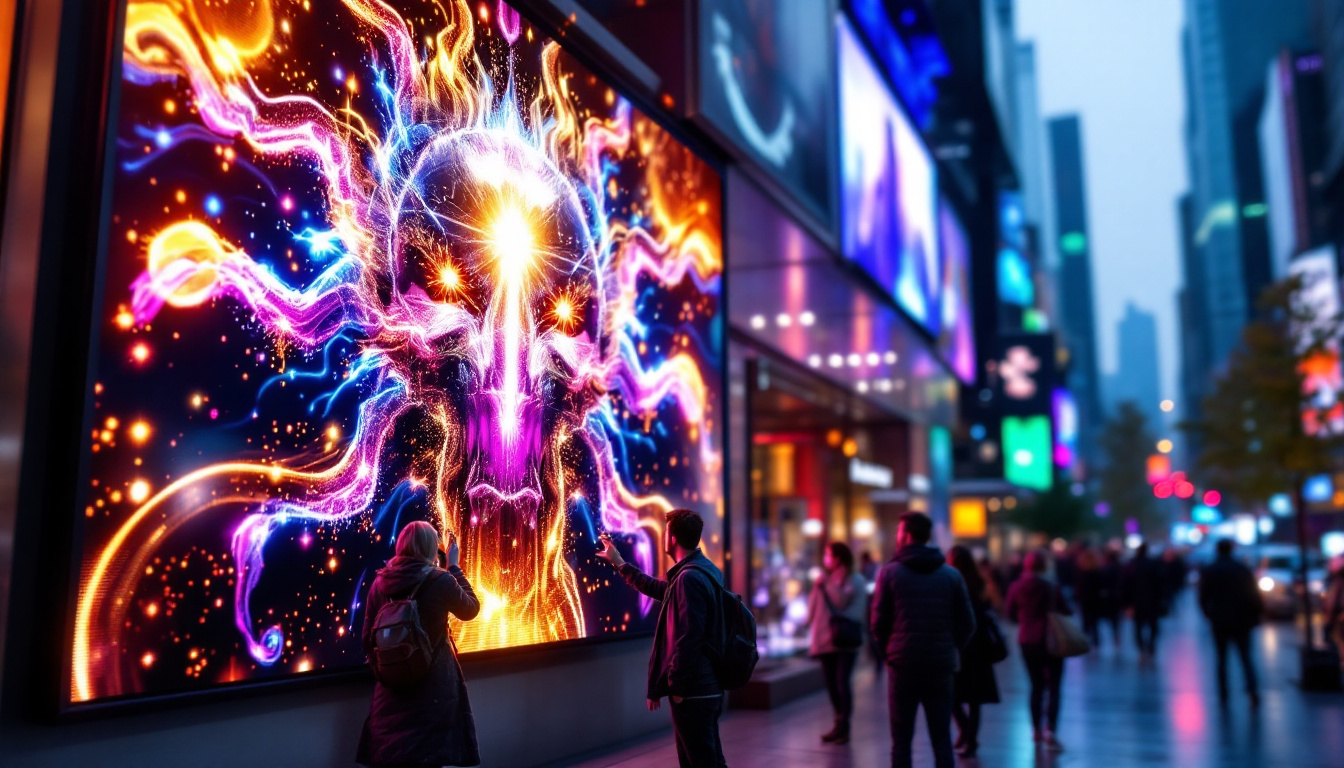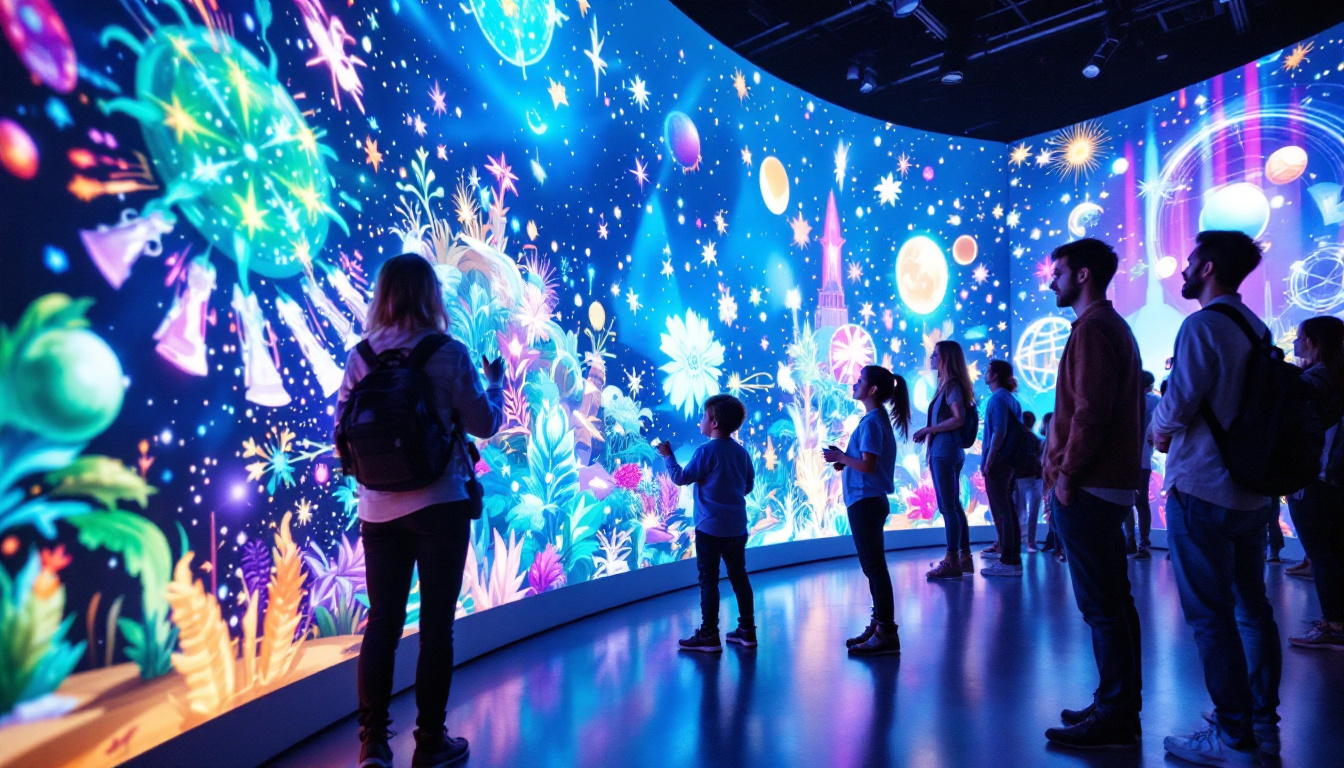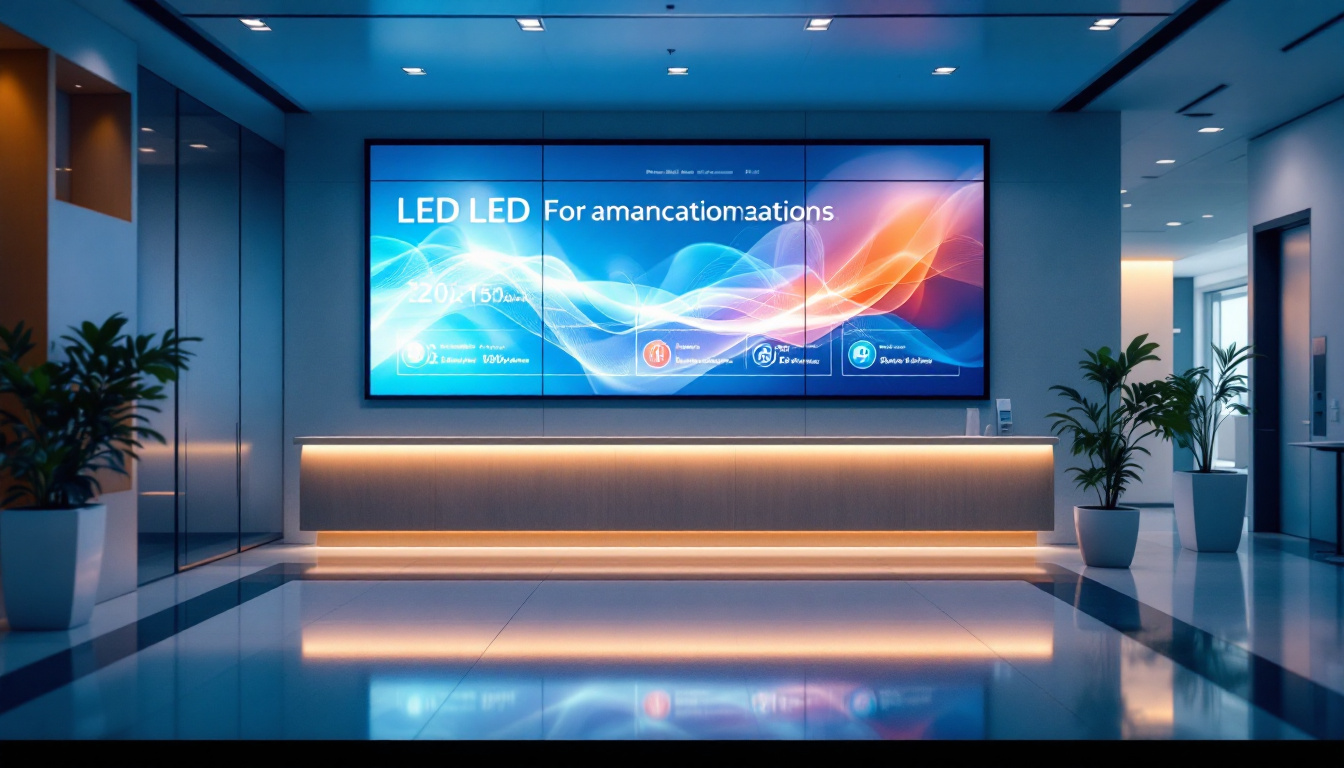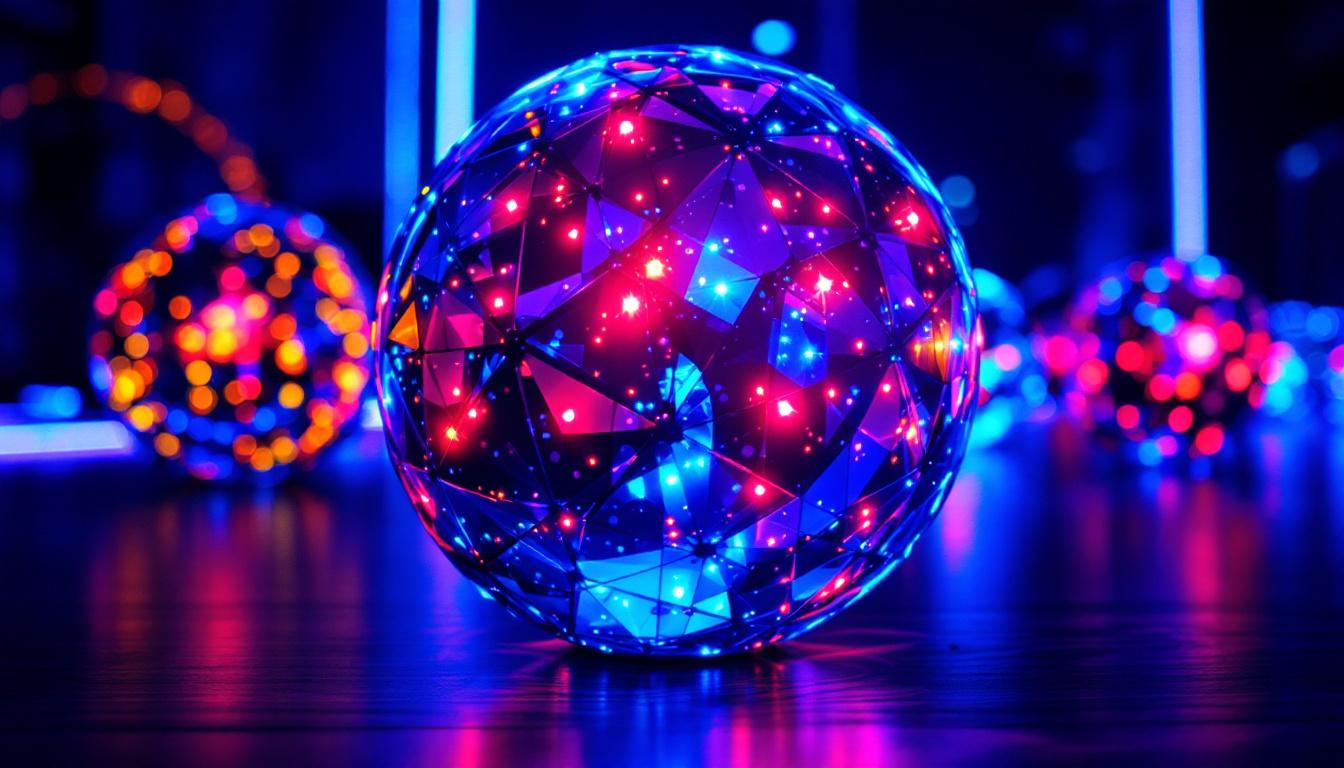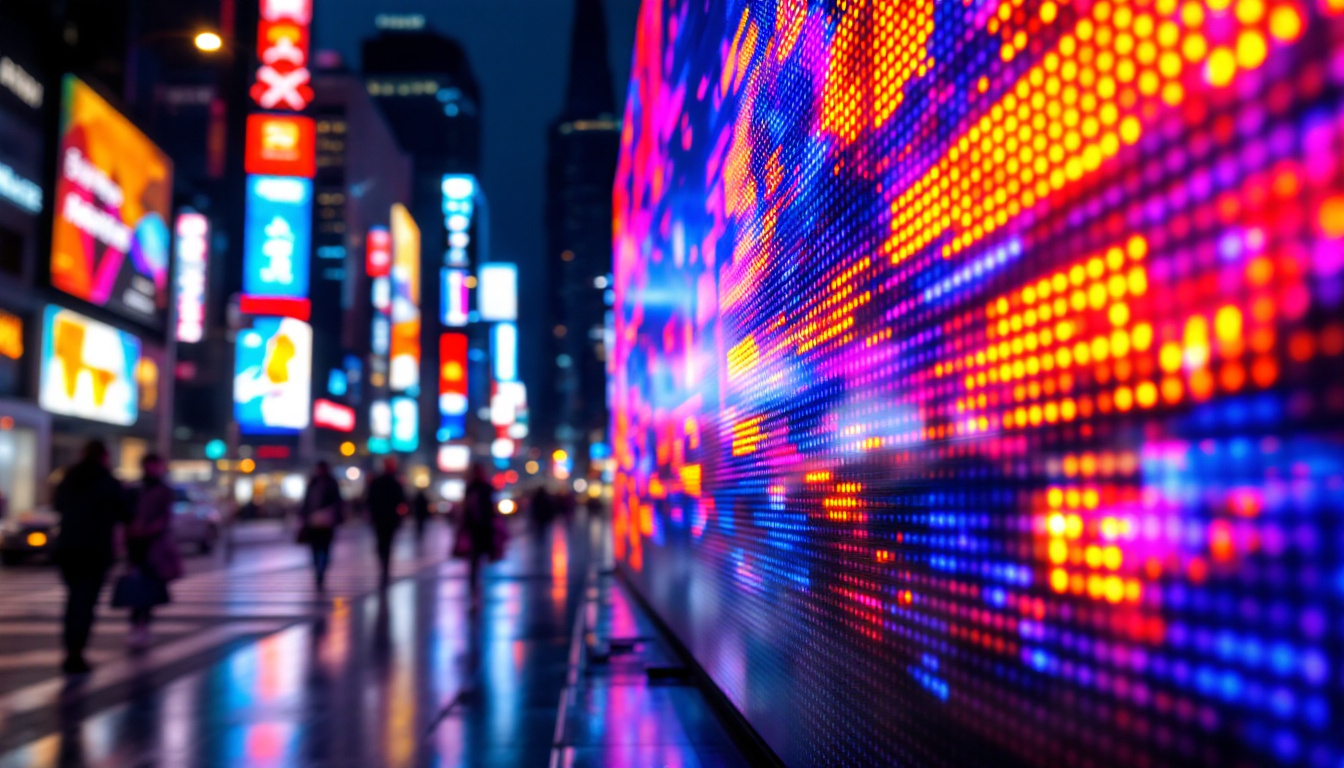In the rapidly evolving landscape of digital visual technology, LED displays have emerged as a dominant force, transforming how information and entertainment are presented across industries. From colossal stadium screens to sleek indoor video walls, LED display technology offers unparalleled brightness, color accuracy, and versatility. This article delves into the fundamentals of LED displays, exploring their technology, applications, advantages, and future trends to provide a comprehensive understanding of this dynamic medium.
Understanding LED Display Technology
At its core, an LED display is a flat panel that uses light-emitting diodes (LEDs) as pixels to produce images and video content. Unlike traditional LCD or projection screens, LED displays emit their own light, which results in brighter images and better contrast ratios, especially in brightly lit environments. This self-illuminating property not only enhances visibility but also contributes to energy efficiency, as LED displays consume less power compared to their predecessors while delivering superior performance.
How LEDs Work in Displays
Each pixel on an LED display is made up of tiny LEDs that emit light when an electrical current passes through them. These LEDs can be red, green, and blue (RGB), and by varying the intensity of each color, the display can produce a full spectrum of colors. This RGB system is fundamental to creating vivid and accurate images. The precision in color mixing allows for a wide range of applications, from digital signage to high-definition television, where color accuracy is paramount.
Modern LED displays often use surface-mounted device (SMD) technology, where the LEDs are mounted directly onto the circuit board. This allows for higher pixel density and better resolution, making SMD LED displays ideal for close viewing distances. Additionally, advancements in thermal management have improved the longevity and reliability of these displays, ensuring that they can operate efficiently even under demanding conditions.
Types of LED Displays
There are several types of LED displays, each suited for different applications:
- Indoor LED Displays: Designed for controlled lighting environments, these displays have a high pixel density and fine pitch (the distance between LEDs), making them perfect for conference rooms, retail stores, and broadcast studios. Their ability to deliver sharp images and vibrant colors makes them an excellent choice for presentations and advertising in spaces where viewers are typically close to the screen.
- Outdoor LED Displays: Built to withstand weather conditions, these displays are brighter to combat sunlight and typically have a larger pixel pitch. They are commonly used for billboards, sports arenas, and public information displays. The durability of outdoor LED displays ensures they can handle rain, snow, and extreme temperatures, making them a reliable choice for continuous operation in various climates.
- Flexible and Transparent LED Displays: Innovations in LED technology have led to flexible panels that can curve around surfaces and transparent displays that allow light to pass through, opening new possibilities in architectural design and advertising. These cutting-edge displays can be integrated into windows or walls, creating immersive environments that blend technology with aesthetics, allowing for creative advertising solutions that do not obstruct natural light.
Furthermore, the integration of smart technology into LED displays has revolutionized their functionality. Many modern LED displays come equipped with sensors and connectivity options that allow for real-time content updates and interactive features. This capability is particularly beneficial in retail environments, where dynamic advertising can be tailored to customer behavior and preferences, enhancing engagement and driving sales. The future of LED display technology promises even more advancements, including the potential for augmented reality applications and enhanced interactivity, making them an essential tool in the digital age.
Applications of LED Displays in Various Industries
LED displays have revolutionized visual communication, finding extensive use across multiple sectors. Their adaptability and performance make them a preferred choice for both permanent installations and temporary events.
Advertising and Marketing
Outdoor LED billboards are a staple in urban advertising, capturing attention with dynamic content that can be updated in real time. According to a 2023 report by the Digital Signage Federation, digital billboards have increased ad engagement rates by up to 30% compared to static signs.
Indoor LED walls in retail environments create immersive shopping experiences, displaying promotional content and interactive advertisements that engage customers more effectively than traditional posters. Retailers can utilize these displays to showcase product demonstrations or customer testimonials, fostering a deeper connection with potential buyers. Additionally, the ability to change content on-the-fly allows businesses to respond to trends and customer preferences instantaneously, leading to increased foot traffic and sales.
Sports and Entertainment Venues
Stadiums and arenas rely heavily on large-scale LED video walls to enhance the spectator experience. These displays provide instant replays, live statistics, and interactive content, making events more engaging and informative. The integration of social media feeds on these screens encourages fan interaction, allowing spectators to see their posts and reactions in real-time, thereby creating a sense of community and excitement.
Concerts and festivals utilize LED screens for stage backdrops and visual effects, with high-resolution panels ensuring visibility even from great distances. The flexibility of LED technology allows for creative stage designs that were previously impossible. For instance, artists can incorporate LED elements that synchronize with their performances, enhancing the overall atmosphere and leaving a lasting impression on attendees. Furthermore, the portability of smaller LED units enables organizers to create unique installations that can adapt to various venues and themes.
Corporate and Educational Settings
In corporate environments, LED displays facilitate presentations, video conferencing, and digital signage in lobbies and meeting rooms. Their clarity and brightness improve communication efficiency and professional aesthetics. Companies can leverage these displays for real-time data visualization, showcasing key performance indicators or project updates, which can significantly enhance decision-making processes during meetings. Additionally, the ability to integrate with various software platforms allows for seamless transitions between different types of content, making presentations more dynamic and engaging.
Educational institutions use LED screens for lecture halls, digital notice boards, and interactive learning tools, enhancing student engagement and information dissemination. These displays can support a variety of teaching methods, from traditional lectures to collaborative group work, by allowing educators to present multimedia content that caters to different learning styles. Moreover, the use of LED technology in classrooms can facilitate remote learning, providing students with high-quality visuals that make online education more effective and interactive. As schools continue to embrace digital transformation, the role of LED displays in fostering an engaging learning environment is becoming increasingly vital.
Advantages of LED Displays Over Other Technologies
LED displays offer several benefits that make them superior to alternative display technologies such as LCD, OLED, and projection systems.
Brightness and Visibility
One of the most significant advantages of LED displays is their high brightness levels, often exceeding 5,000 nits for outdoor models. This brightness ensures excellent visibility even in direct sunlight, where LCD or projection screens would struggle.
Energy Efficiency and Longevity
LEDs are inherently energy-efficient, consuming less power than traditional lighting and display technologies. This efficiency translates to lower operating costs and a reduced environmental footprint.
Additionally, LED displays have a long lifespan, typically rated between 50,000 to 100,000 hours. This durability makes them a cost-effective investment for businesses and public installations.
Color Accuracy and Contrast
Because LEDs emit light directly, LED displays achieve deeper blacks and higher contrast ratios than LCDs, which rely on backlighting. This results in more vibrant and true-to-life images, crucial for applications like broadcasting and digital art.
Scalability and Customization
LED panels are modular, allowing for scalable display sizes from small indoor screens to massive outdoor video walls. This modularity also facilitates maintenance, as individual panels can be replaced without dismantling the entire display.
Key Considerations When Choosing an LED Display
Selecting the right LED display involves evaluating several factors to ensure it meets the specific needs of the intended application.
Pixel Pitch and Resolution
Pixel pitch, the distance between the centers of two adjacent LEDs, determines the resolution and viewing distance of the display. Smaller pixel pitches (1-2 mm) are ideal for close-up viewing, such as indoor displays, while larger pitches (10 mm or more) suit outdoor applications where viewers are farther away.
Brightness and Environmental Resistance
Outdoor displays require higher brightness levels and weatherproofing to withstand rain, dust, and temperature fluctuations. Look for displays with IP65 or higher ratings for reliable outdoor performance.
Refresh Rate and Response Time
High refresh rates (above 1,000 Hz) are essential for smooth video playback and reducing flicker, particularly in broadcast environments. Fast response times also contribute to image clarity during motion sequences.
Installation and Maintenance
Consider the ease of installation and access for maintenance. Front-serviceable LED panels simplify repairs in tight spaces, while lightweight designs reduce structural load and installation costs.
The Future of LED Display Technology
Advancements in LED technology continue to push the boundaries of what is possible in visual displays. Emerging trends promise to enhance performance, interactivity, and integration with other digital systems.
MicroLED and MiniLED Innovations
MicroLED technology, which uses microscopic LEDs, offers even higher resolution, brightness, and energy efficiency than current LED displays. Although still in the early stages of commercial adoption, MicroLED is poised to revolutionize consumer electronics and large-scale displays alike.
MiniLED backlighting is already improving LCD displays by increasing contrast and brightness, bridging the gap between traditional LCD and full LED displays.
Interactive and Smart Displays
Integration of touch sensors, cameras, and AI-driven content management systems is making LED displays more interactive and responsive. Smart LED walls can adapt content based on audience demographics, environmental conditions, or real-time data streams.
Sustainability and Eco-Friendly Designs
Manufacturers are focusing on reducing the environmental impact of LED displays by using recyclable materials, improving energy efficiency, and developing longer-lasting components. These efforts align with global sustainability goals and customer demand for greener technologies.
Conclusion
LED display technology represents a powerful tool for visual communication, offering unmatched brightness, versatility, and durability. Its applications span advertising, entertainment, corporate communication, and education, making it an indispensable asset in the digital age. Understanding the technology, benefits, and considerations involved in LED displays enables businesses and organizations to harness their full potential and stay ahead in a visually driven world.
Discover the Future of Visual Communication with LumenMatrix
Ready to elevate your visual storytelling and captivate your audience like never before? Explore LumenMatrix’s comprehensive range of LED display solutions, from vibrant Indoor and Outdoor LED Walls to innovative Transparent and Custom Displays. Embrace the future of digital signage with our cutting-edge technology designed to make your brand shine. Whether for advertising, live events, or dynamic corporate presentations, LumenMatrix is your partner in creating immersive visual experiences. Check out LumenMatrix LED Display Solutions today and transform your space into a canvas of endless possibilities.

